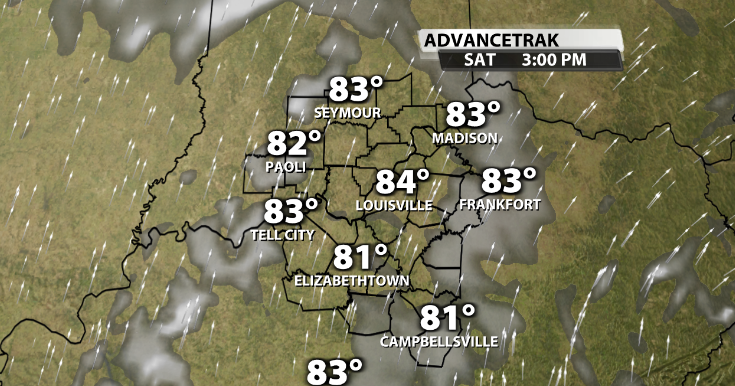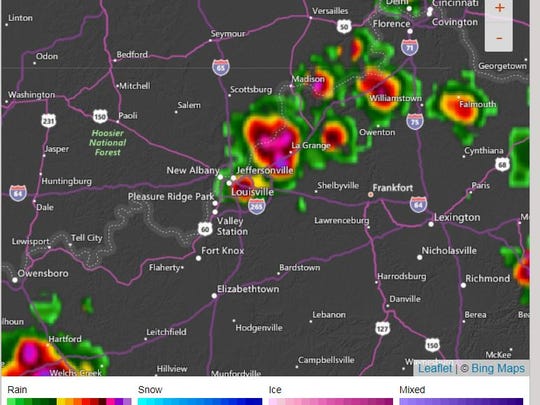Louisville, Kentucky, is known for its vibrant culture, rich history, and beautiful landscapes. However, it is also susceptible to severe weather events, including thunderstorms, tornadoes, and winter storms. Understanding how to prepare for these conditions can save lives and protect property. This comprehensive guide will provide residents with essential information and actionable steps to take before, during, and after severe weather events.
Understanding the Weather Patterns in Louisville
Louisville experiences a range of weather phenomena due to its geographical location. Situated in the Ohio Valley, it faces unique climatic conditions that can lead to severe weather events. According to the National Weather Service, Louisville encounters:
- Thunderstorms: These are frequent in the spring and summer, often producing heavy rain, hail, and strong winds.
- Tornadoes: The region is part of “Tornado Alley,” with an average of 18 tornadoes reported annually.
- Winter Storms: Snow and ice storms can occur, leading to hazardous driving conditions and power outages.
Understanding these patterns is crucial for effective preparation and response strategies.
Creating a Severe Weather Preparedness Plan

Preparation is the key to safety during severe weather events. Developing a comprehensive emergency plan is essential for households and businesses alike. Here’s how to create one:
1. Assess Your Risks
Identify the types of severe weather that are most likely to affect your area. Use local resources, such as the Louisville Metro Emergency Management Agency, to understand your specific risks.
2. Develop a Communication Plan
Establish how your family or team will communicate during an emergency. Ensure that everyone knows how to reach one another and has access to emergency contact numbers.
3. Create an Emergency Kit
Your emergency kit should include the following items:
- Water: At least one gallon per person per day for three days.
- Non-perishable food: Enough for three days.
- Flashlight and extra batteries.
- First aid kit.
- Whistle to signal for help.
- Dust mask to help filter contaminated air.
- Moist towelettes, garbage bags, and plastic ties for personal sanitation.
- Manual can opener for food, if kit contains canned goods.
- Local maps.
- Cell phone with chargers and a backup battery.
4. Develop an Evacuation Plan
Know your evacuation routes and the locations of shelters. In some severe weather cases, local authorities may issue a mandatory evacuation. Familiarize yourself with the nearest shelters, which can be found through the Louisville Metro Emergency Management Agency.
Staying Informed: Weather Alerts and Updates
Staying informed is crucial during severe weather events. Here are ways to receive timely updates:
- NWS Alerts: Sign up for alerts from the National Weather Service via text or email.
- Local News: Follow local news stations and their websites or social media for real-time updates.
- Weather Apps: Download weather apps that provide alerts and forecasts specific to your area.
By utilizing these resources, you can stay ahead of changing weather conditions.
During Severe Weather: Immediate Actions to Take

When severe weather strikes, knowing how to react can make a significant difference. Here are steps to take during various weather events:
1. Thunderstorms
During a thunderstorm, seek shelter indoors. Avoid using electrical appliances, and stay away from windows. If you are caught outside:
- Find shelter in a sturdy building or vehicle.
- Avoid tall objects such as trees.
- Stay low if you feel a storm approaching, and avoid open fields.
2. Tornadoes
In the event of a tornado warning:
- Seek shelter in a basement or an interior room on the lowest level of your home.
- Use heavy furniture or mattresses to protect yourself from debris.
- Stay tuned to weather updates via radio or smartphone.
3. Winter Storms
During a winter storm, it’s essential to stay indoors:
- Keep your home heated and avoid opening doors unnecessarily.
- If you must travel, ensure your vehicle is winter-ready, with snow tires and emergency supplies.
- Stay informed about road conditions and closures.
Post-Storm Safety Tips
After severe weather has passed, safety remains a priority. Here’s how to navigate the aftermath:
1. Assess Damage
Carefully inspect your property for damage. Be cautious of fallen power lines and debris. Report any downed lines to authorities.
2. Stay Informed
Continue to monitor local news for updates on recovery efforts and any additional weather forecasts that may affect the area.
3. Provide Assistance
Check on neighbors, especially the elderly or those with disabilities, to ensure they are safe and have the resources they need.
Real-Life Case Studies: Lessons Learned
Learning from past weather events can enhance preparedness. Here are two examples from Louisville:
1. 1974 Super Outbreak

The Super Outbreak of 1974 was one of the largest tornado outbreaks in U.S. history, affecting Louisville significantly. The event highlighted the need for timely warnings and community preparedness. In its aftermath, local agencies improved their communication strategies and established more robust emergency response protocols.
2. Winter Storms of 2009
The winter storms in February 2009 paralyzed the city, causing widespread power outages and hazardous driving conditions. This event led to increased emphasis on winter preparedness, including better snow removal strategies and community readiness programs.
Preparing for severe weather in Louisville is a critical responsibility for residents. By understanding local weather patterns, creating emergency plans, staying informed, and knowing how to act during and after severe weather events, individuals can significantly enhance their safety and resilience. The lessons learned from past events serve as a reminder of the importance of preparedness and community support. As Louisville continues to evolve, so too must our strategies for weather preparedness. By taking these actionable steps, residents can ensure that they are equipped to face whatever nature may bring.





